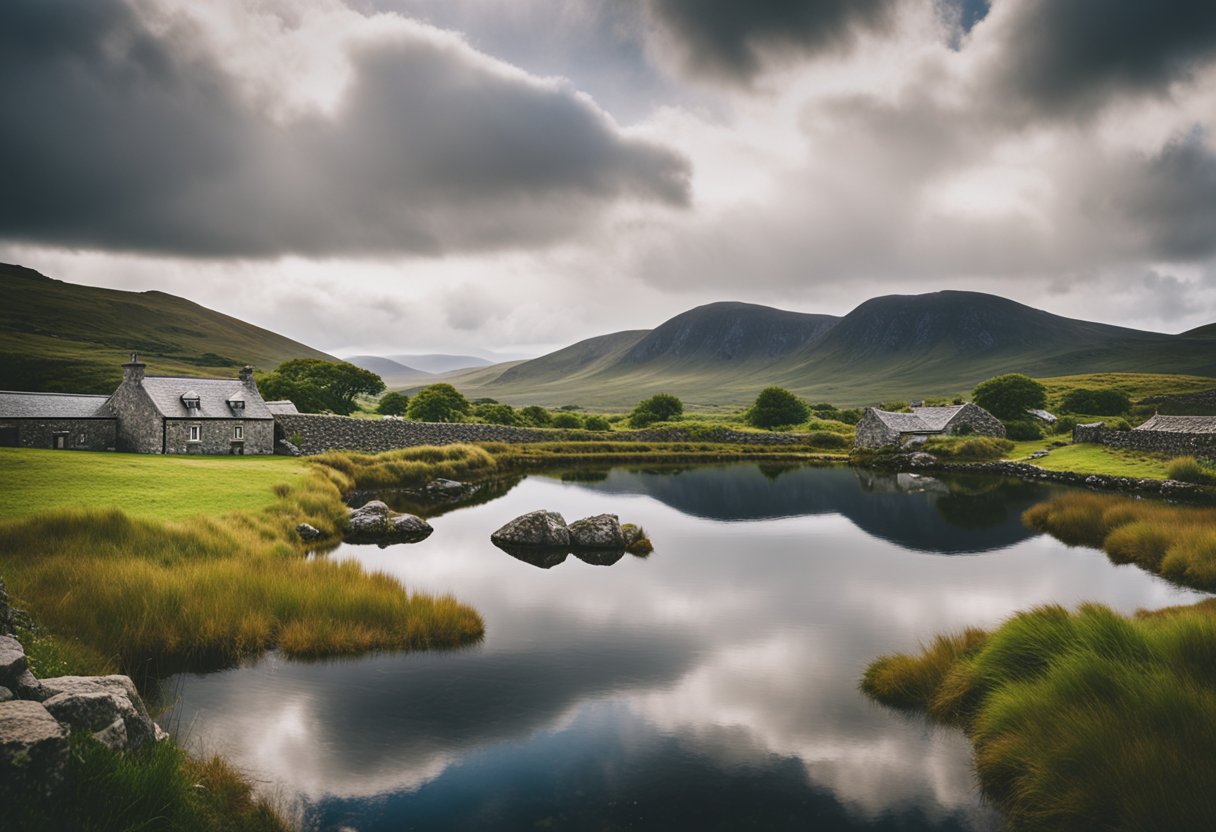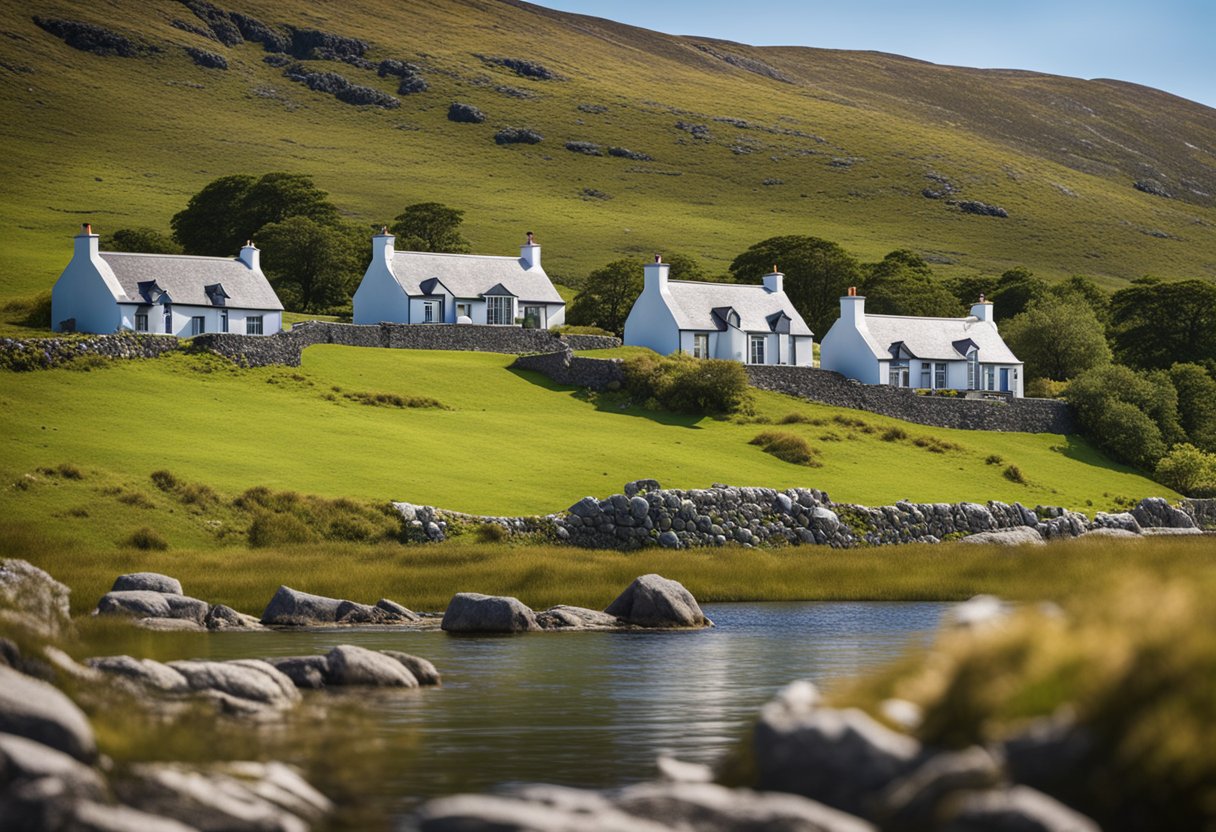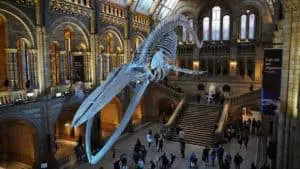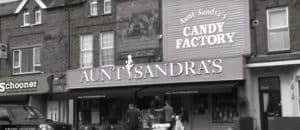The Quiet Man’s Ireland: Exploring Connemara’s Timeless Charm

Updated On: April 07, 2024 by Asmaa Alhashimy
Travelling through the rugged landscape of Connemara, one cannot help but feel a stirring sense of nostalgia, particularly at the mention of the classic film, The Quiet Man. This cinematic treasure, directed by John Ford, captures the idyllic charm of Ireland with its engaging tale set against the backdrop of Ireland’s serene countryside. As we traverse the same lands that once set the stage for this beloved movie, there is an undeniable connection to the Ireland of yesteryear, an Ireland that continues to bewitch fans and travellers alike with its green pastures and timeless traditions.

Connemara’s breathtaking scenery serves as a real-world canvas for the film’s narrative, making it a pilgrimage site for those who yearn to walk in the footsteps of the iconic characters, Sean Thornton and Mary Kate Danaher. The Quiet Man Museum in Cong offers an in-depth experience, allowing visitors to delve into the world of the film and providing insight into its creation and the lasting impact it has had both on-screen and within the local community. Beyond the museum’s walls lies a wealth of activities, from tracing the quiet lanes depicted in the film to indulging in the cultural heartbeat of Connemara, which—like the film itself—continues to draw people back to this enchanting part of Ireland.
The Genesis of the Film

In exploring its roots, we find a confluence of John Ford’s nostalgic vision and the allure of Ireland for Hollywood’s storytelling.
John Ford’s Vision
It was the formidable director John Ford who conceived the iconic cinematic experience. Ford, with his deep connection to his Irish heritage, was determined to paint a canvas that celebrated the essence of Ireland. He was inspired by Maurice Walsh’s short story, which bears the same name and wished to bring the romanticised version of Ireland that the story presented to life on the silver screen.
Hollywood Meets Ireland
The Quiet Man stands as a hallmark of Hollywood’s infatuation with Ireland, juxtaposing American industry might with the bucolic charm of the Irish countryside. The film intersected with Irish film history as it showcased the vibrant culture and lush landscapes of Connemara, infusing Hollywood storytelling with authentic Irish flavours. The result was an enduring legacy that intertwined Ford’s personal vision with a joyful portrayal of Ireland, forever captured in the annals of cinema history.
Immersive Locations
As we explore the tapestry of Ireland as it is depicted in the film, we find ourselves enveloped in the striking settings that have captured the hearts of fans for generations. The film’s locations in Connemara provide not just a backdrop but a vivid character in their own right.
From Cong to Castletown
In the quaint village of Cong, straddling the borders of Counties Mayo and Galway, we discover the central pulse of The Quiet Man film locations. Here, the timelessness of Reverend Playfair’s House, depicted by the iconic The Quiet Man Cottage, invites fans to step into a scene unaltered since the 1950s. Venturing to what served as the fictional “Castletown,” we find ourselves at Ballyglunin Train Station. Its platform, where Sean first arrived, offers a tangible connection to the classic film’s beginning.
The Quiet Man Bridge and Beyond
Just a short journey from the village leads us to the emblematic The Quiet Man Bridge, standing sentinel over the flowing waters. Surrounding this structure, the rugged landscape of Connemara unfolds, offering a panorama of lush greenery that extends to the serene shores of Lough Corrib near Oughterard. This region serves as a character in its own right, with the bridge and surrounding vistas breathing life into the film’s narrative.
Ashford Castle’s Grandeur
No visit to the filming locations is complete without beholding the majestic Ashford Castle. Resplendent in its grandeur and nestled on the shores of Lough Corrib, it presents not merely a location but an experience imbued with historical resonance. The castle’s opulent setting brings us closer to understanding the cinematic charm that enriched The Quiet Man, providing context to the story’s unfolding romance.
As we traverse these sites, we are not simply spectators but participants in a rich cinematic heritage that continues to captivate. Each location, from the heart of Cong to the grandiosity of Ashford Castle, offers us a passage through time, cementing our connection to these immortalised Irish landscapes.
The Cast and Characters
We uncover the memorable roles that brought The Quiet Man to life, showcasing a talented cast that became icons of Irish-American cinema.
John Wayne’s Irish-American Role
John Wayne, a titan of the Western genre, splendidly shifted gears to embody Sean Thornton, an Irish-American boxer returning to his ancestral home in Innisfree. His portrayal balances the stoic charm of his American roles with a touch of Irish warmth, crafting a Boxer whose homecoming is as much about reclaiming heritage as it is about seeking peace.
Maureen O’Hara and the Ensemble
Maureen O’Hara‘s spirited portrayal of Mary Kate Danaher stands as a powerful counterpoint to Wayne’s Thornton. O’Hara’s passionate performance captures the essence of a determined Irish woman, her fiery spirit meshing perfectly with Wayne’s stoicism. Victor McLaglen, playing her brother Will Danaher, provides robust support, exemplifying the archetypical Irish temperament with a performance that adds both humour and depth to the cast.
Iconic Moments on Screen
The film is revered for its memorable moments that capture the essence of classic cinema. Here we revisit some of the most striking scenes that have left an indelible mark on the audience.
The Fight Scene
In one of the most famous sequences, our protagonist – a retired American boxer – finds himself in an epic fistfight that ripples through the village of Innisfree. This fight scene is notable not only for its choreography but also for its expression of a character asserting his personal honour, setting a new course in his ancestral homeland.
Romantic and Cinematic Landscapes
The beauty of Ireland is a silent character in The Quiet Man. Lush, green landscapes serve as the backdrop for the burgeoning romance between the main characters. Each frame paints a picture of the idyllic Irish countryside, making the film synonymous with the romantic and cinematic landscapes of Connemara.
In-Depth: The Quiet Man Museum

The Quiet Man Museum in Cong is a dedicated homage to the 1952 classic film, offering an immersive experience for visitors to step into the world of John Ford’s beloved movie.
Recreating the Magic
Location: At the heart of Cong village, the museum replicates the key settings and invites visitors to walk through a precise reproduction of the White O’Meara cottage. Inside, one can explore rooms that are accurate to the smallest detail, effectively transporting fans back to the era and scenes of the film.
Tours: Visitors are also invited to participate in walking tours, which guide them through Cong’s local landmarks and landscapes featured in the movie, further reviving the spirit and romance of The Quiet Man.
Must-See Memorabilia
Exhibits: The museum showcases a collection of original and replica props, costumes, and other items associated with the film. From the clothes worn by John Wayne and Maureen O’Hara to the film’s original scripts, each artefact lets visitors delve into the film’s history.
Shop: There is also an award-winning shop where enthusiasts can obtain the largest selection of The Quiet Man memorabilia, offering them a tangible piece of cinematic legacy to take home.
By showcasing relics of the past and presenting them in an engaging manner, the Quiet Man Museum stands as both a preservation effort and a celebration of the film’s enduring legacy.
Transport and Accessibility

When journeying to the heart of Connemara to relive the timeless charm of The Quiet Man, travellers will find the N59 road and the heritage Ballyglunin Railway Station integral to their exploration. These transport links are crucial for the accessibility and enjoyment of this celebrated Irish locale.
N59: Gateway to Connemara
The N59 road serves as the main artery leading adventurers into the wilds of Connemara. This vital roadway is well-maintained, offering a smooth journey with adequate parking facilities and laybys for those driving a car. The N59 not only connects visitors to the picturesque landscapes where the iconic film was set but also leads to other cultural and natural wonders in the region.
The Old Ballyglunin Station
Steeped in cinematic history, the Ballyglunin Railway Station stands as a proud monument of The Quiet Man. Although no longer in operation for travel, the station has been preserved and restored, allowing fans to step into a piece of the film’s history. The station’s accessibility via car and the availability of parking space enables an easy visit for those eager to walk the same grounds as Hollywood legends did decades ago.
Modern Connections

In this section, we explore the everlasting impact of The Quiet Man on Connemara and its significance in modern times, particularly in relation to tourism and the region’s revival post-pandemic.
The Quiet Man and Tourism Today
Since its release, The Quiet Man has become a cultural touchstone, with Cong Village and the surrounding Connemara region drawing in fans and tourists keen to walk in the footsteps of John Wayne and Maureen O’Hara. Organised walking tours provide visitors with a chance to relive classic scenes and soak in the landscapes that framed the film. The legacy of the film significantly bolsters tourism, turning the once-quiet locale into a vibrant destination.
- Location Highlights:
- Original filming locations in and around Cong
- Peacockes Hotel, a central base for many tourists
- Themed memorabilia and experiences in local businesses
After the Pandemic: Visiting Connemara
With the lifting of COVID-19 travel restrictions, tourism in Connemara is experiencing a resurgence. Audiences are eager for authentic experiences, and our walking paths once again echo with the footsteps of those on guided tours. The renewed interest fuels local economies and breathes life back into the region.
- Post-Pandemic Shifts:
- Increase in domestic and international visitors
- Enhanced health and safety protocols in hospitality venues
The connection between The Quiet Man and Connemara remains a heartfelt narrative that continues to influence tourism and local pride decades after the film’s release.
Activities and Experiences
Exploring the splendour of The Quiet Man’s Ireland in Connemara is not just about reliving the classic movie’s scenes; it’s an opportunity to immerse oneself in vibrant outdoor activities. Our focus is firmly set on bringing these experiences to life through adventure and tranquillity.
Exploring the Landscape on Foot
We can’t help but be drawn to the rich textures of the Connemara landscape, a place where the film’s indelible imagery was captured. Striding alongside the meandering Leam River, one embarks on a journey through an enchanting portion of Irish wilderness that harmoniously blends cinematic history and natural beauty. The reel steps of John Wayne and Maureen O’Hara can be retraced on the very grounds they once walked, particularly around the breathtaking Lettergesh Beach with its sandy shores and murmuring waves—a perfect spot that combines relaxation with scenic walks.
For the more audacious souls, the trek towards the rugged mountains promises an arresting view that is worth every step climbed. These pathways, carved out by both history and nature, offer hikers of all levels a chance to discover firsthand the unspoilt vistas that famously backdropped The Quiet Man.
Fishing and Relaxation by Lough Corrib
Angling enthusiasts will find their haven by the shores of Lough Corrib, Ireland’s second-largest lake and a renowned fishing locale. Our outing on the lake is a serene escape, where the rhythm of life slows to the cast of a line and the gentle lull of water.
Whether one chooses a contemplative solo venture or a guided expedition, Lough Corrib’s ample stocks of brown trout and salmon ensure a satisfying day for all fishing levels. On the sun-dappled waters, as the mountains stand sentinel in the distance, we can unwind and reconnect with the simple pleasures of a quiet afternoon or perhaps contemplate the next adventure that awaits in the rolling greens of Connemara.
Beyond The Quiet Man
The impact of The Quiet Man extends well beyond its cinematic storyline, influencing both the portrayal of Ireland in film and the prominence of Irish filming locations.
Other Film Sites in the West of Ireland
The West of Ireland is no stranger to the silver screen; its rugged beauty has been the backdrop for numerous films. Connemara, in particular, has hosted scenes from The Field and Marley & Me, allowing its sweeping landscapes to narrate untold stories. Galway has been the setting for parts of The Guard, stunning audiences with its natural charm.
The Emerald Isle’s Role in Cinema
The role of the Emerald Isle in cinema is monumental. Irish film has a reputation for storytelling that showcases the country’s rich culture and history. Ireland offers a treasure of locations that are perfect for various movie genres, from romantic comedies to historical epics. Productions here not only boost the local economy but also cement Ireland’s status as a key player in the international movie industry.
Practical Information for Visitors

Visiting The Quiet Man’s Ireland offers an enriching experience steeped in cinematic and cultural history. Before embarking on your journey, take a moment to consider where you’ll stay and how to navigate the region to make the most of your trip.
Accommodation Options
Galway and Mayo are the main counties that will serve as your backdrop for exploring The Quiet Man‘s Connemara. In and around the village of Cong, where much of the movie was filmed, you’ll find a range of accommodations to suit your preferences:
- Hotels: From luxury to budget-friendly, expect warm Irish hospitality.
- B&Bs: Perfect for an authentic and cosy stay.
- Self-Catering: Ideal for those who prefer a more independent setup.
Clifden, often known as the Capital of Connemara, also offers a mix of charming accommodations, from historic hotels to contemporary lodgings.
Travel Tips and Resources
Travelling to Connemara calls for some planning to ensure a smooth experience:
- Transport: Renting a car is highly recommended for flexibility. Public transport is available but can be limited.
- Visitor Centres: Stop by local visitor centres for up-to-date information, maps, and tips.
- Pat Cohan’s Bar in Cong: A must-visit for fans of The Quiet Man, even if it’s more a cinematic homage than an actual pub from yesteryears.
Cong and surrounding areas are not just about the film; they are also gateways to experiencing the natural beauty and cultural richness of Ireland. While there, consider a guided tour that provides an immersive dive into the world of the 1952 Academy Award-winning movie.
Respectful travelling is key; we recommend seeking out experiences that support local businesses and cultural heritage sites.
Frequently Asked Questions

We’ve gathered some of the most commonly asked questions about The Quiet Man and the iconic Connemara region where the classic film was shot.
What is a renowned line from The Quiet Man?
One of the most memorable lines from The Quiet Man is, “There’ll be no locks or bolts between us, Mary Kate… except those in your own mercenary little heart!” This line perfectly encapsulates the fiery romance that is central to the film.
How can I view The Quiet Man in the current era?
To relive the classic tale, you can usually find The Quiet Man available for purchase or rent across various digital platforms, such as iTunes or Amazon. Occasionally, it is also featured on streaming services that celebrate classic cinema.
Which locality in Ireland served as the filming location for The Quiet Man?
The charming village of Cong in County Mayo and the surrounding areas of Connemara in County Galway served as the backdrop for many scenes in The Quiet Man.
Does The Quiet Man derive from factual events?
The Quiet Man is a work of fiction based on a 1933 short story by Maurice Walsh. However, the film does capture many elements of Irish rural life, typical of the 1920s and 1930s, which resonate with Ireland’s cultural history.
What are the signature elements of Connemara showcased in The Quiet Man?
Connemara’s stunning landscapes, featuring rolling green hills, thatched cottages, and stone walls, are integral to The Quiet Man, showcasing the natural beauty of the West of Ireland.
Can you suggest tours that explore the filming sites of The Quiet Man in Connemara?
Certainly, there are guided tours available that take you through the idyllic settings of The Quiet Man, including the quaint village of Cong and the scenic Ashford Castle.






